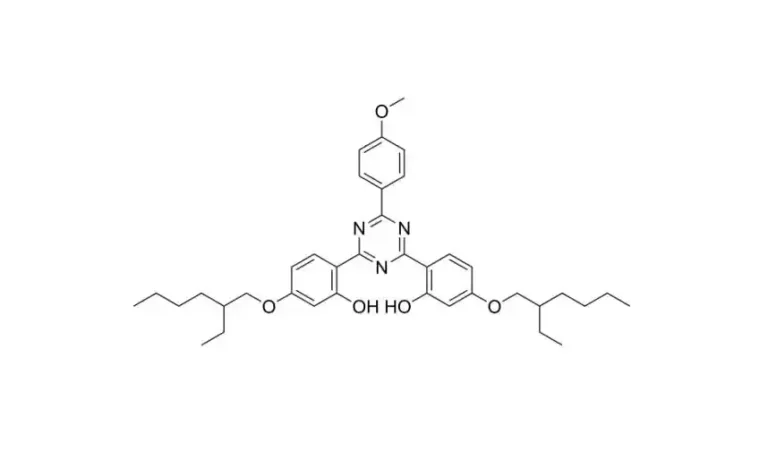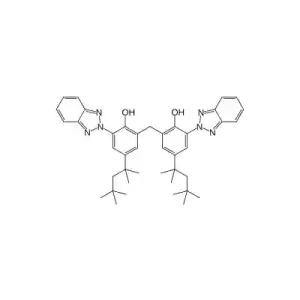As sunscreen formulations evolve, bisoctrizole is set to revolutionize the industry with its unique properties. This blog will discover how this advanced ingredient could reshape the future of sun protection by 2025, offering enhanced efficacy and user-friendly benefits.
What Role Will Bisoctrizole Play in Future Sunscreen Formulations?
The sunscreen sector is on the brink of change as it adopts cutting-edge components such as bisoctrizole—an advanced UVA absorber known for its efficacy and stability against sunlight exposure in a form that could revolutionize sunscreen products by 2025. The exploration of its functions demands an in-depth examination of the scientific attributes and advantages that this exceptional substance brings to the table.
The Science Behind Bisoctrizole
Bisoctrizole, also known as Methylene Bis-Benzotriazolyl Tetramethylbutylphenol (Tinosorb M), is a highly effective, micronized, photostable UVA absorber. It acts as a UV filter by absorbing UVA light, scattering and reflecting UV light due to its micro-organic particle size, and absorbing blue light. This triple sunscreen effect is complemented by its excellent photostability and broadband UV protection capabilities.
Advantages of Bisoctrizole Over Traditional Ingredients
Bisoctrizole presents benefits compared to conventional sunscreen components as it delivers wide-ranging UV protection supported by exceptional photostability for consistent performance all day long. Furthermore, when integrated with oil UV filters, it has the potential to enhance the SPF of products considerably. One key advantage is its capacity to adjust color in formulations because of its hue, which proves valuable in developing visually appealing products while maintaining effective protection.
How Are Innovations in Sunscreen Technology Evolving?
The increasing need for safer sun protection is leading to significant advancements in sunscreen technology at a fast pace. These progressions are influenced not by what consumers want, but also by changes in regulations and environmental concerns.
Emerging Trends in Sunscreen Formulations
New developments in sunblock formulas involve incorporating ingredients that offer more advantages beyond just shielding from UV rays. For example, the utilization of mineral-based UV blockers such as Titanium Dioxide and Zinc Oxide is becoming increasingly favored for their capacity to soak up, bounce back, and scatter UV light while delivering a skin sensation. These components are frequently covered with materials like Silica or Dimethicone to boost their durability and adaptability to formulations.
The Impact of Regulatory Changes on Formulation
Regulatory adjustments are vital in influencing the development of formulas going forward as there is growing emphasis placed upon ingredient safety and environmental considerations that encourage formulators to be more inventive within stricter limits. The inclusion of substances such as bisoctrizole is a fit, for these standards because of its established safety record and ability to work effectively even at lower doses.
What Can We Expect from the Future of Sunscreen Formulations with Bisoctrizole?
In the coming years, beyond 2025, bisoctrizole is anticipated to lead the way in sunscreen advancements. Its distinct characteristics position it as a choice for future formulations that focus on effectiveness and user satisfaction.
Predictions for 2025 and Beyond
In the years up to the 2025th year ahead of us lays a vision where bisoctrizole will likely find its place in an expanded array of sun protection items – ranging from everyday moisturizers equipped with SPF to top-notch sunscreens engineered for harsh environments. Ongoing studies exploring the combined impact with UV filters indicate that forthcoming product compositions will provide improved shielding while retaining a light feel that appeals to consumers’ tastes.
What Are the Potential Challenges and Solutions in Using Bisoctrizole?
While bisoctrizole shows potential, for sunscreen effectiveness it does come with its own set of challenges that require creative solutions to overcome.
Addressing Formulation Compatibility Issues
A key obstacle is making sure the bisoctrizole blends well with ingredients in the formulation due to its tendency to form particles, which need to be evenly dispersed in emulsions to avoid settling or clumping together. By employing emulsification methods, these challenges can be addressed and guarantee the consistent spread of the ingredient across the product.
Overcoming Market Adoption Barriers
Overcoming challenges in getting people to try ingredients in sunscreen and changing their views on traditional sunscreens are key hurdles in the market adoption process for bisoctrizole, a superior sun protection option that consumers may not be familiar with yet.
Why Is BFP a Reliable Supplier of Bisoctrizole?
When it comes to creating sunscreen formulas in a market setting, finding a trustworthy source for the necessary raw materials is crucial. BFP shines as a choice for sourcing bisoctrizole thanks to their vast knowledge and skills in the field.
Overview of BFP’s Expertise and Capabilities
Shanghai BFP New Material Co., Ltd focuses on manufacturing and providing materials that combat aging specifically tailored for use in sun care and cosmetics sectors. Their dedication to improving and extending the look and performance of both people and final products is clearly demonstrated by the wide range of products they offer. At BFP we have a variety of products in different categories, such as organic UV filters and mineral UV filters (including Titanium Dioxide and Zinc Oxide), dispersive liquids and whitening powders (Non nano-size Titanium Dioxide), as well as UV absorbers.
The corporation runs factories in provinces in China like Tianjin and Shandong, to Hubei and Jiangsu regions too. These locations are strategically placed in chemical parks with workshops and some even hold GMP certifications. This setup guarantees a stream of top-notch products that cater to the needs of the personal care sector effectively.
Conclusion
Sunscreen formulations are changing quickly with advancements such as bisoctrizole becoming increasingly important in the industry. Taking into account both regulations and consumer preferences for sun protection options, bisoctrizole stands out for its special characteristics making it a key component in the development of advanced sunscreens for the future.
Shanghai BFP New Material Co.’s commitment to producing and supplying high-quality products establishes them as a trusted partner in the evolving industry landscape. By offering a range of capabilities in manufacturing top-notch bisoctrizole, they enable formulators to access premium raw materials essential for developing innovative sun care products.
FAQs About Bisoctrizole in Sunscreen Formulations
Is bisoctrizole safe for all skin types?
Certainly! Here is the paraphrased text; Indeed bisoctrizole is deemed safe for all skin types because of its ability to remain stable when exposed to sunlight and its wide range of protection features. Its milled structure enables efficient absorption without triggering any irritation or negative responses.
Can bisoctrizole be combined with other UV filters?
Sure thing! Bisoctrizole can definitely be mixed with UV filters to improve the effectiveness of sunscreen products. It works together with oil-based UV filters to increase SPF levels and ensure consistency in formulations.
How does bisoctrizole compare to zinc oxide in terms of effectiveness?
The ingredient Bisoctrizole provides UV protection similar to zinc oxide but also offers the added advantage of color correction due to its white coloration appearance. It is effective in shielding against the sun’s rays, and its capability to absorb blue light enhances its protective properties against harmful radiation.













